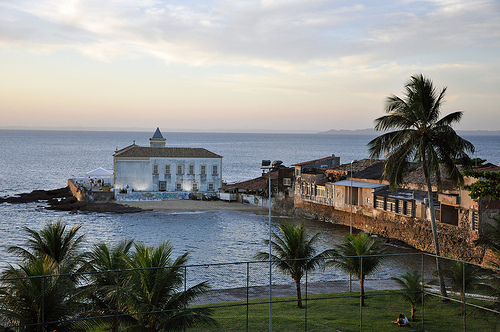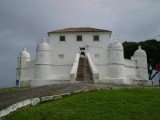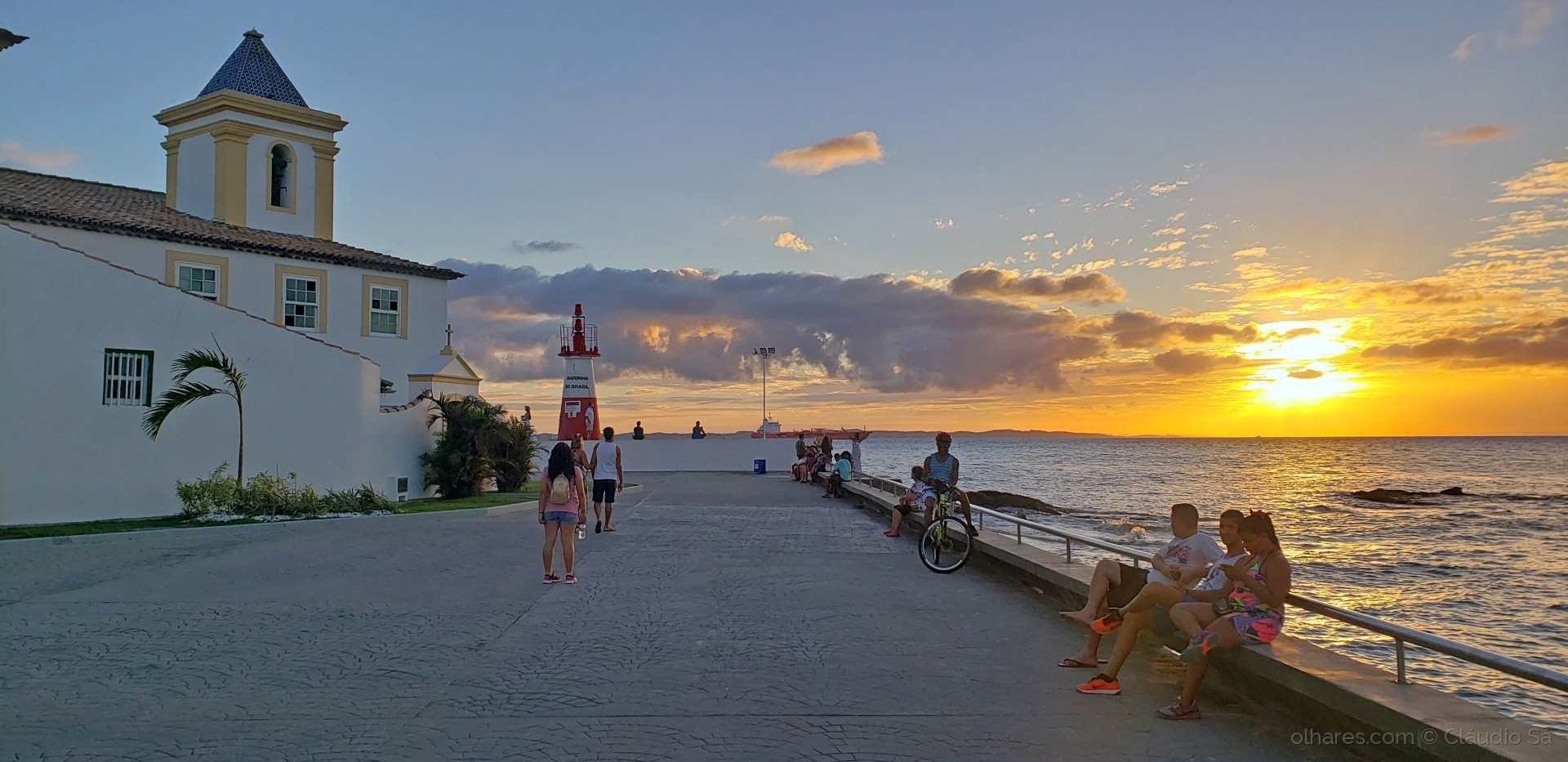Este post também está disponível em:
Português
English

Ponta de Humaitá is near the Monte Serrat Fort, is one of the most charming places in Salvador, with a privileged view of the Bay of All Saints and an unforgettable sunset.
Get to know a little of the magic and history of Ponta de Humaitá.
For those who want an unmissable evening, a good tour is to Ponta do Humaitá, a tourist spot still little publicized on the Itapagipe peninsula, downtown. From there you can have a beautiful view of the city.
In the courtyard that invades the sea, there is a small church, a convent and a lighthouse, from where we have one of the most poetic seascapes of the Baia de Todos os Santos, especially at sunset.
The enchanting sunset, the calm sea, and the privileged view of the city were the characteristics most cited by the region’s visitors.
Allied to this, the cultural diversity and the spontaneous manifestations of religious beliefs also differentiate the place from the others. In the courtyard, we found the Church of Nossa Senhora do Monte Serrat, a place where faithful renewed their faith with the mass that was being celebrated. Next to the church, a Candomblé group was performing a Roda de Samba.
The joy and reverence for beliefs caught the attention of tourists, who took pictures and could not resist dancing. On the walls that give access to the sea, near the Lighthouse, while fishermen took the opportunity to fish, children played in the calm waters.
Ponta do Humaitá is located near the Forte de Monte Serrat, a military monument of Bahia built in the 16th century.
The site was completed in 1742, and since 1993 houses the Armory Museum, with civilian and military armaments.
Ponta do Humaitá stands out for its architectural works. “The old church, the Lighthouse and the view that allows you to enjoy the sunset are the parts that most admired.
The Humaitá Fort served as a defense of Bahia at the time of Brazil Empire, from Dutch invasions. So being here means reliving and cultivating our history.
Video about Ponta de Humaitá in Salvador da Bahia

Tourist spots of Ponta de Humaitá

Forte de Monte Serrat or São Felipe
Ponta de Humaitá is close to the Monte Serrat or São Felipe Fort, a construction dating from the 16th century, considered, for its harmonious lines, the most beautiful military monument in Bahia.
Built in 1583, in a strategic position at the top of the point, it was completed in 1742, without modifications to its original plan.
Since 1993, it has housed the Armory Museum, with civilian and military armaments, some used by the Army in the past.
From this fort you have the most privileged view of the entrance to Todos os Santos Bay, seeing Salvador on one side and Itaparica Island on the other.

Stunning charm and beauty. This is what the visitor finds at Ponta de Humaitá.
A small peninsula over the Bay of All Saints where the Church and Monastery of Our Lady of Mount Serrat were built at the end of the 16th century.
Extending longitudinally to the Fortress of Monte Serrat, this peninsula, also known as Ponta de Monte Serrat, was once a strategic place for observing the Bay and defending the city of Salvador.
In addition to the church and the monastery, Ponta de Humaitá houses a charming lighthouse and a pier, recently renovated to give visitors comfort for observing the landscape.
Whether from the pier, the lighthouse or the vicinity of the church, from any angle you can watch an unforgettable sunset. Certainly, one of the most beautiful landscapes of our city.
History of the Church of N.S. de Monte Serrat.
The primitive sanctuary of Our Lady of Mount Serrat was founded around 1580. The architectural complex dates from the second half of the 17th century, with a project by the Italian architect Baccio de Filicaya.
The little church was built by the governor-general of Brazil, Francisco de Souza, at the same time that he built the fort of São Felipe. Francisco de Souza donated the temple to the Monastery of São Bento.

In the early 20th century, it was renovated and the main altar received ornaments from the Church of São Bento. It houses an image of St. Peter Repentant, by Friar Agostinho da Piedade.
Bahia.ws – Tourism and Travel Guide of Salvador, Bahia and Northeast Brazil




















